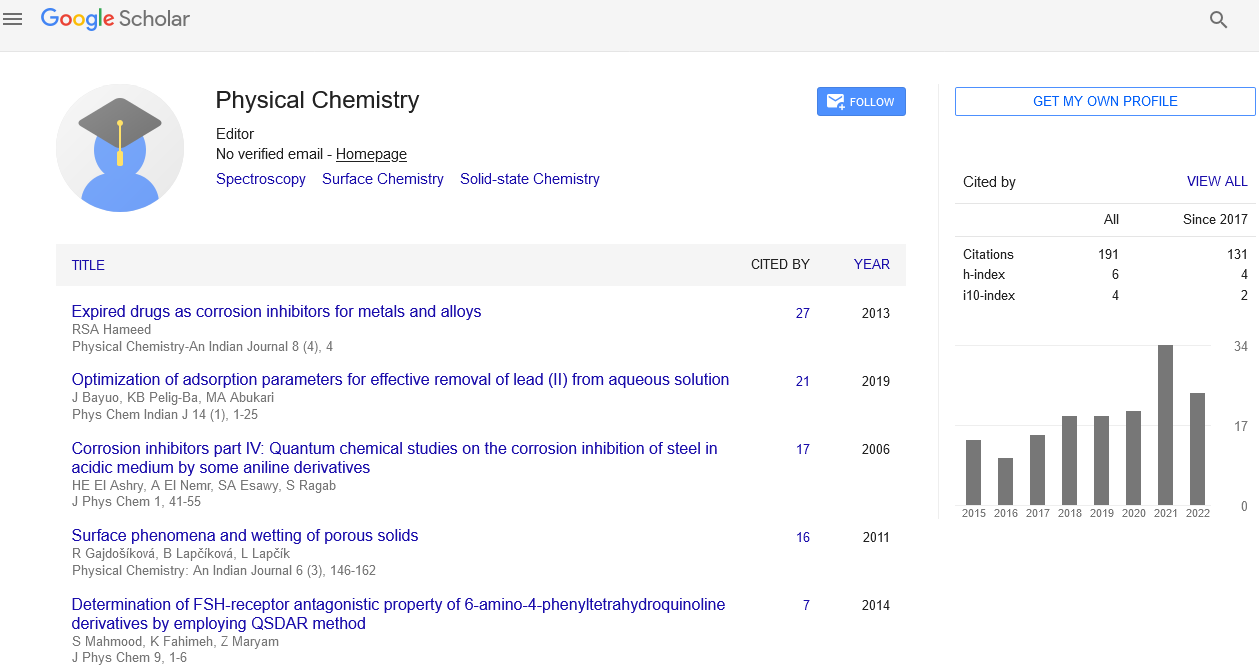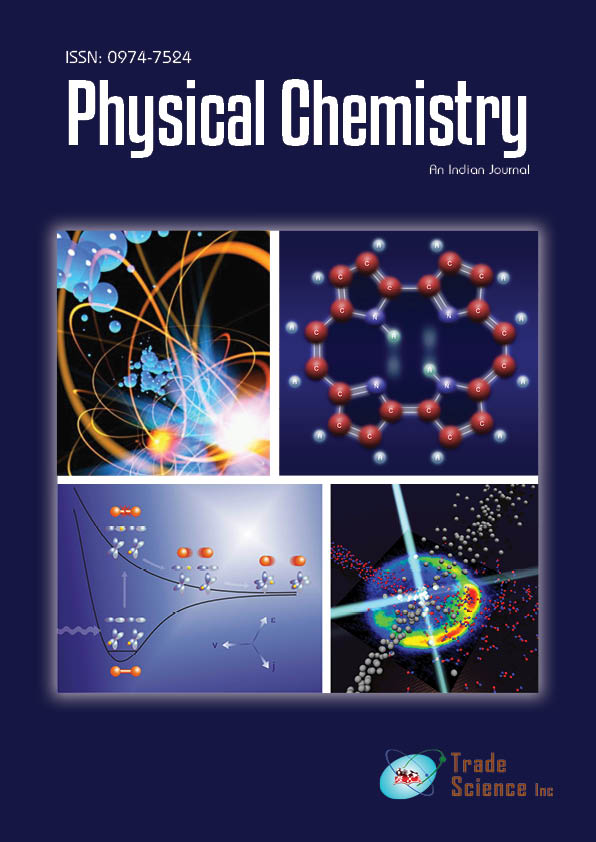Short communication
, Volume: 18( 1)ION Spectroscopy
Ion Spectroscopy Margaret Crippa *, Chira Morris Editorial Office, Physical Chemistry: An Indian Journal, West End Southampton Hampshire UK. *Corresponding author: Margaret Crippa , Editorial Office, Physical Chemistry: An Indian Journal, West End Southampton Hampshire, UK Received date: July 17, 2022, Manuscript No. M- tspc-22-79660; Editor assigned: July, 19, 2022, PreQC No. P- tspc-22-79660; Reviewed: August 7, 2022, QC No. tspc-22-79660; Revised: August 12, 2022, Manuscript No. R- tspc-22-79660; Published date: August 25, 2022, DOI: 10.37532/2320–6756.2022.17(4)
It is reasonable to presume that ion spectroscopy researchers are a homogeneous group and are thoroughly informed of changes in this specialised field. This was refuted by the just finished Asilomar Conference on Ion Spectroscopy. Ion spectroscopy has a wide variety of study focuses, in fact. Asilomar's gathering of this diverse collection of spectroscopists and theorists led to a fruitful and dynamic exchange of knowledge and ideas that fully achieved the objectives of these seminars. It is noteworthy that many scientists working in this subject are from Europe (many of whom are involved in ASMS initiatives), and the conference benefited from having a sizeable representation of European speakers and attendees. There were various spectroscopy themes represented. The majority of the speakers discussed various experiments in which ions are produced in an appropriate ion source and their spectra is examined using a light source and/or detector with a changeable wavelength. A number of the participants used the CLIO in Orsay, France, and FELIX at the FOM in Utrecht, Netherlands, two infrared Free Electron Laser (FEL) facilities. By comparing the expected IR spectra from calculated structures with the experimentally observed spectra, the majority of these investigations used electrospray ionisation to produce biologically relevant ions. Ions can be separated thanks to multiphoton absorption, which is made possible by the IR FEL's high power. As the laser is scanned, dissociation products are collected to track the absorption. The variety of chemistry that these two FEL facilities' diverse outside customers bring is noteworthy. Uranyl complexes (Gary Groenewold, Idaho National Laboratory), carbon clusters and metal/metal oxide clusters (Gerard Meijer, Fritz-Haber Institute), cationized nucleobases (Mary Rodgers, Wayne State University), anionic species (Jos Oomens, FOM/FELIX), and inorganic and organic complexes were among the chemistry topics covered in conference talks (Philippe Maitre, CLIO). Inextricably linked to the experimental infrared Parallel computational investigations of their potential conformations, thermochemistry, and IR spectroscopy are studies of moderate-sized gas-phase ions. Two regularly working with FEL to advance this Gilles Ohanessian's computational efforts (Ecole Polytechnique) and Bela Paizs (German Cancer Research Center), who talked about the developing conformational search methodology and its outcomes with a peptide system-focused ICR traps in CLIO and FELIX both keep the ions at ambient temperature. In contrast to these investigations, Thomas Rizzo (EPFL Lausanne) described laboratory-based experiments where ions are kept in an ion trap that has been cooled to roughly 12 K by a He cryostat and the ions are analysed by a tunable IR OPO laser. Cold helium collisions and letting the ions reach radiative equilibrium with the trap's walls are what chill the ions to this low temperature. Multiphoton dissociation, which in some experiments July be aided by a fixed-frequency CO2 laser, or more delicately by the absorption of a UV photon in a two-photon experiment, is once more used to observe the IR spectroscopy of the ions. Multiple low-temperature conformers of biomolecule ions are being Citation: Triesten Walker. Spin and Charge Correlations in Molecule-based Materials Physical Properties, Chemistry, and Materials Aspects. Phys. Chem.: Indian J.2022;17(4):262. ©2022 Trade Science Inc. 1 Short Communication www.tsijournals.com | August-2022 2 uncovered and spectroscopically resolved by these high-resolution IR experiments. The employment of pulsed molecular beams is another method for cooling the ions. Ions are produced by a discharge near the nozzle exit, and the resulting soup of ions is subsequently cooled in the expansion. The next phase involves mass-selecting ions and probing them with an IR OPO laser while monitoring the photon absorption stage with Ar tagging. When one IR photon is absorbed in this way, Ar is only weakly coupled to the cold ion and easily dissociates. By using this effective spectroscopic technique, Michael Duncan (University of Georgia) described examples of both metal-ion complexes and tiny hydrocarbon ions. Using this method, Evan Bieske (University of Melbourne) presented the outcomes for metal-ion hydrogen complexes, with applications to hydrogen-storage technologies (perhaps in the future) in mind. The combination of chilled ions and the high resolution of the OPO lasers (0.1 cm-1 - 0.01 cm-1 ) produces IR spectra that are significantly better defined than are attainable with the IR FEL's resolution of 10 cm-1 in both trappedion work and molecular beam work. Two laboratories whose spectroscopy includes both the electronic transitions in the visible and ultraviolet and the vibrational transitions in the infrared claimed progress in their work. Infrared light was used to explain new developments in Ricardo Metz's visible/UV work with catalytically intriguing transition-metal complexes. A remarkable variety of ion-spectroscopic techniques were used by John Maier (University of Basel) to scan the diverse operations of his lab, with the goal of learning more about astrochemical intriguing ions

